“…That is the beauty of spice: It is not a static subject, but one that changes constantly from one part of India to the next, and from one period in history to another.” ~ Marryam H. Reshii, The Flavour of Spice.
The relationship between food and humankind has been as long and fraught with adventures as history itself. We tamed fire in the course of evolution and figured out ways to make our food more easily digestible, and to survive. Over centuries, we taught ourselves to differentiate between what might kill us and what will improve the taste of our food, refining our own palates in the process. We learned to grow food when we needed it and then, to create a surplus out of it.
A key player in this story of man and food has been flavour. We learned, over time, how to preserve food, adding smells and flavours from our natural surroundings – leading to the creation of specific culinary cultures as we now know them with their diverse spectrum and regional nuances. This quest for flavour is inextricably woven into our tryst with food and cultural identities. The Spice Route was established from the west coast of Japan, through the islands of Indonesia and around India to the lands of the Middle East and then across the Mediterranean to Europe. It is a distance of over 15,000 kilometres and in no way an easy journey. And yet, spices travelled, carving their own history across the geographies of the ancient worlds – provoking expeditions, fantasies, the rise and fall of empires even. In fact, remember Columbus and his grand voyage to “discover” India? Or Vasco da Gama who landed up on our shores one fine day five centuries ago and changed the course of history? It was not the mere “love for foreign lands” that drove them here but the lure of these “exotic” spices!
In truth, India has been the forerunner of spices since the beginning of recorded history. The humble spices of India have travelled across the sea from the first time it was possible. We have found traces of Malabar pepper in Egypt dating back to King Rameses II – who died in 1213 – which tells us more about how evolved trade was back in those days, and how the preservative quality of peppers was known even back then. The pepper was found up the nostrils of the mummy!
We may not have always had our now familiar spices in our masala dabba but Indians have adapted quickly to adding and using these to enhance their food. A dish loaded with spices is as kindred to the idea of India as is the Ganges. Our food incorporates the principles of Ayurveda and is looked at as healing. The way that certain dishes are cooked, or where they are eaten geographically, or even when they are to be consumed, stems from this ancient science.
Monsoons call for something fried and tangy, winter needs something that will warm the bones while summer calls for something light to sooth the body – each contrasting the environment to stimulate the senses.
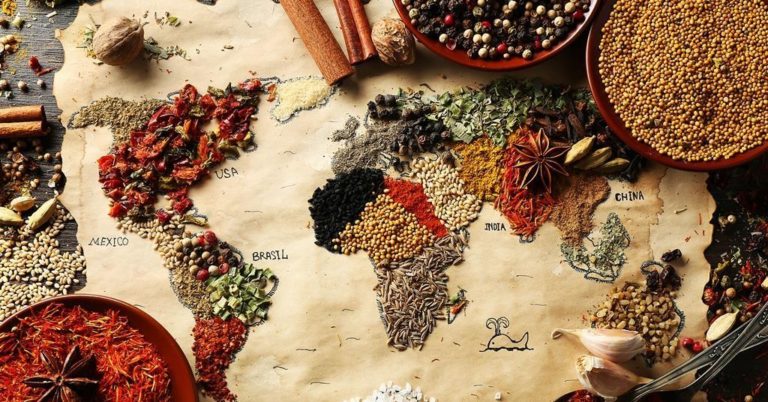
India is a diverse land – geographically and culturally. You only need to travel from one population hub to another to see the metamorphosis that takes place in people, their habits and idiosyncrasies. These are usually driven by the hands of history, geography, politics and most importantly, the resources available around the inhabited land. The flora of a region becomes the distinguishing marker of a community. They also tell a tale of the history of the land, of their natives and of course, their eating patterns. For example – dried fish is consumed in the Koli communities of Maharashtra during the monsoons because they believe that the mating seasons and monsoons are indispensable for sustaining the community through the year. If you are taking from the sea, you must allow it to fill up and recover. Similarly, the tribes of Chhattisgarh never cut a mahua (Madhuca longifolia) tree. They treat the tree as a divine entity that provides for them all year round and gives them the sustenance they need. The dried flowers are stored and used as flour for rotis and laddus. It is a pity that we mainly associate mahua with liquor when it stands for so much more.
But I stray too much. The history of spice is for books – there are many that talk about it. What truly fascinates me is how you can see a spice mix from a particular region in India and almost immediately be able to tell where the dish is from. The free-handed use of a certain spice in a certain region is countered with a measured amount in another’s. Was it due to the traveling difficulties of the lore, or was it a foreign spice that wasn’t reliable for an everyday kitchen?
Tracing a spice’s journey is tracing history and tracing history, as we all know, is a rabbit hole to fall into. Have you ever wondered why certain spices are consumed more in a certain weather, or where we are geographically? Think of the lemon ginger honey tea found so freely in the mountains of the North, and the lemon nana (or mint lemonade) found around the beaches along the coasts. Have you ever questioned why we adapt to edible patterns that become intrinsic memories and reminders of moments, rather than being unidimensional about taste?
While some spices have been adopted universally in the kitchens of India, there are a few that are limited to their use in certain geographies – the bearers of the communities of these regions, and the unique markers of their food heritage, as much a part of their communal identity as the history of their migration, hardships, and current urban spaces that they occupy. We are talking about a plethora of these spices – teppal along the Western Coast of India, perilla seeds in the North-Eastern parts of India and Uttarakhand, anardana in Punjab and many more.
Over the years and across my journeys, I have collected some of these spices, making additions here and there to my pantry and learning their stories. I have tried to record some of them in this handbook of sorts – in effect, curating a masala box with elements that most of us are not quickly familiar with!
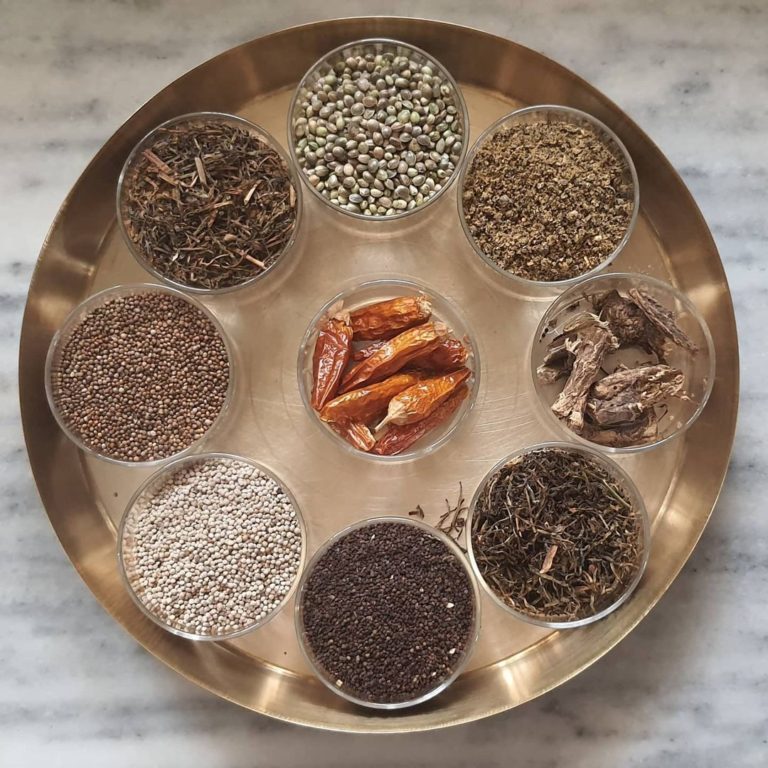
Teppal / Tirphal [ zanthoxylum rhetsa ]
This cousin of Sichuan pepper is found along the Konkan belt of India, namely coastal Maharashtra and North Karnataka and in Goa. Its most common use is in the robust fish curries of the region. It is believed that the astringency of the spice cuts through the fatty oils of mackerel or protein-rich beans, with which it is commonly paired. According to Ayurveda, it is an anti-flatulent ( which explains the pairings of the spice) and is known to balance the kapha and vata doshas which becomes important in temperamental weather conditions of the coastlines.
This spice is the key ingredient of the dish amshe tikshe which is a curry made with the indian mackerel in a gravy of byadgi chillies, tamarind and garlic. It is also used in baked dishes from the Chitrapur Saraswat community such as bangde hugge where the fish is coated in a paste made of Byadgi chillies, coconut and tamarind which is then mixed with some teppal. This is then covered in turmeric leaves and baked in a traditional dish to give place for a beautifully fragrant dish with soft notes of sweetness from the turmeric leaves. My first encounter was at an Amchi friend’s house who had made the amshe tikshe for me. They told me that they could not imagine their food without this spice.
Indeed, Teppal is used throughout the year by the communities of the region. Unlike a lot of other spices, only the outer covering of the fruit is used. The tree bears fruits in the monsoons and the seeds are discarded while the outer covering, or the pericarp, is stored to use as the spice. Excessive use of it can cause bitterness in your dish which is perhaps why it is generally added at the end of the cooking process. One of the key things that really stood out for me when I met this spice was that you don’t grind the pepper but use it whole!
Radhuni [ Trachyspermum roxburghianum]
The quintessential Bengali spice mix of panch phoran is incomplete without radhuni. The spice mix consists of five seeds of which radhuni is an integral part. It comes from the same family as carrots or parsley. It is a wild celery seed that looks more like carom seeds, but tastes close to fenugreek seeds. It adds a layer of herbaceousness to the mix. It is used at the very beginning of the cooking process to “temper” a dish – a technique that is unique to India. It allows the spices to bloom in hot fat (ghee or oil) and is then poured over the dish whereupon the fat molecules coat the finished dish, adding another heavenly layer.
The typical Bengali shukto is incomplete without this radhuni. It is said that four to five radhuni plants are adequate for a family of 4-5 members as the plant continuously provides the spice for 4-5 years.
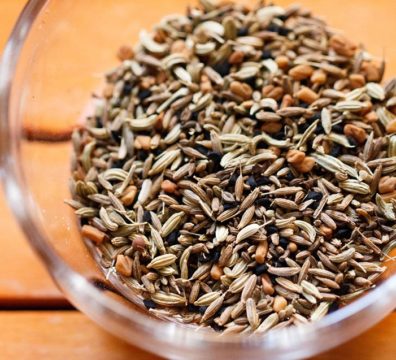
The seed is a staple of the Ghotis – the group of Bengalis who were original residents of that part of undivided Bengal, which eventually became West Bengal after the Bengal Partition. In India, it grows primarily in the Borpeta district of Assam, or is brought in from Bangladesh which is one of the biggest cultivators of the spice. In Ayurveda, it is used as an essence for treatment of colic, asthma, and diseases of the kidney and digestive tract.
Jakhiya
One of the signature spices of the cuisine from Uttarakhand, my first introduction to jakhiya was through Culinary Chronicler and Corporate Food Consultant Rushina Munshaw Ghildiyal and the Uttarakhand spice kits she’s put together. She told me to take a little rice, add some ghee and just eat some of the heated seeds with it to really understand the flavour. My first impression was an earthy and nutty bite to the taste – in fact, you could almost mistake it for tea powder. But then, when you use it to temper your food, it brings a whole new dimension to the dish. It is commonly used in tempering dishes such as a potato fry or over cooked greens.
Garhwal and Kumaon are two prominent regions that hail from Uttarakhand, and for the longest time, they have been cut off from the world due to the hardy terrain. The cuisine that developed in these regions was largely dependent on foraging and what was available locally. The jakhiya plant, or dog’s mustard, is a wild plant that grows easily in the given conditions and is more prominent in the Garhwali cuisine.
Chora [ Angelica Glauca ]
Locally known as chora or gandrayani in Uttarakhand, this spice comes from a root. The roots are dried and ground before using. It is commonly used in the tempering of dals, especially whole dals. It makes it easier to digest. The garhwali rajma lacks tomatoes but is incomplete without the root.
When I first came across it, it reminded me of a ginger root. I have been advised, by Rushina again, to use it in the same quantities as I would hing.
It is a medicinal herb, known to increase appetite and to cure stomach ailments. The roots are pungent, aromatic, diaphoretic and diuretic. It also increases appetite and is combined with tonics for typhoid conditions, bronchitis, flatulence, colic and pain in the stomach.
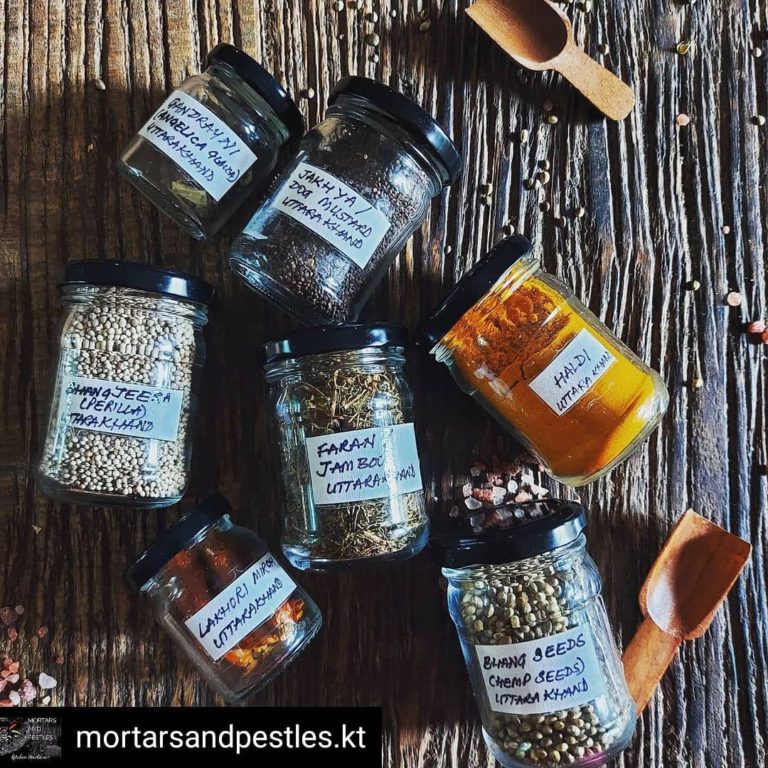
Anardana [ Punica granatum ]
The pomegranate came to India from Iran around the 1st century AD. In India, it grows in the himalayan region of the country and its dry kernels are used as a spice, primarily in Punjab. Anardana lends a tart flavour to the food along with a slight sweetness. It is also one of the few essential spices of a good pindi chhole, or a good khatte aloo.
Recently, when I asked my grandmother about the spice and how it is not used as much in our family, she said it fell out of our family kitchens because my dad and his sister did not enjoy it. For me though, a good aloo paratha is incomplete without anardana in the masala.
Dagadphool [ Parmotrema perlatum ]
It has only been a year or two since I first heard about this spice. Dagadphool / kalpasi / patthar phool is a lichen – a fungus that grows on the bark of various trees and rocks. It was quite interesting to come across it because one of the only recorded uses of this spice is in the Maharashtrian goda masala – a spice blend integral for the Maharashtrian amti which is a sweet and sour lentils dish. It is also crucial to the Chettinad cuisine, according to a few. The black stone flower adds an earthy aroma to the dishes, once in touch with heat and fat. Too much of it can add a bitterness to the dish that is difficult to salvage. The spice is warming to the body and requires one to be careful while consuming.
Interestingly, a lot of people don’t admit to using this in their spice mixes as it is too fragile to go through the mandatory cleaning procedures mandated by the ISO 9001 guidelines. It is also not used much in Northern India as it is an essential part of the havan samagri – a mix that is used for the traditional rituals, thus abjuring its role as a spice in cooking everyday food.
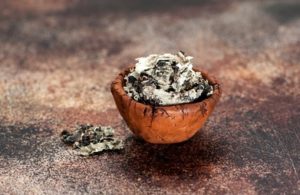
The Dagadphool Spice
Black Sesame [ Sesamum indicum ]
Sesame is used across the world and is one of the oldest spices. However, while the rest of India primarily uses white sesame in their food, Assamese cuisine prefers to use black sesame. The much-loved Khasi dish of sesame pork/ chicken uses this spice in abundance and is nutty and earthy and reminiscent of petrichor. It is also used for the various pithas, which are made with rice, sesame and jaggery. Each variation of the pitha is associated with one of the Bihu celebrations that take place all the year round.
Black sesame is believed to have anti-aging properties along with strengthening the bones and the skin. Sesame oil made from black sesame is one of the most revered seed oils in India.
Perilla [ Perilla frutescens ]
I first had this spice in the Tons Valley of Uttarakhand this year in a local dish called goshua. A quick search showed me that the plant comes from the same family asthe Shiso leaf used in Japanese cuisine and I was intrigued. It is known as bhaangjeera there, with nothing to do with the actual bhaang that is infamous in India. It is also used in Manipur extensively and is known as thoiding. It is either light or dark brown, depending on the life stage it is at.
It is famously used in various chutneys and flavoured salts that are known in the regions. It is also a famous seed for oil in the regions of Kumaon. The seed cakes from the oil extraction are then used to feed the cattle. Manipuri cuisine uses the ground roasted seeds in local salads known as ‘singju’. It is known as nei lieh by the Khasis and its seeds are used in salads and meat dishes.
Naagkesar [ Mammea longifolia ]
These are the unopened flowers from the Ceylon Ironwood tree or the Indian Chestnut Tree just before they bloom and resemble cloves in appearance. It is used for its sweet fragrance and the flavour is similar to that of all-spice. It is also more commonly known as cobra saffron.
In India, it is one of the key spices of the infamous chyawanprash that most of us have been made to eat as kids. It is also one of the ingredients of the famous Parsi Dhansak Masala, Maharashtrian Goda Masala, and Malvani Masala powders.
It is most commonly used in the cuisine of Maharashtra and Goa. In Sri Lanka, these cloves are mainly ornamental and the tree is the national tree for the country.
In Ayurveda, though, various parts of cobra’s saffron – seeds, fruits, leaves and roots – are used to treat bleeding disorders, the common cold, asthma and even snake bites.
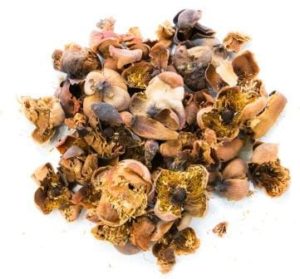
In the last year and a half, when travelling has been absolutely minimal and the wanderlust had to be boxed in, it became extremely important for me to keep exploring the country in some way or the other. The best way I could do this was to learn more about the people in each place, the stories they tell through the food that they eat, and try to recreate it in my own kitchen. I made friends from across the country – each kind enough to share their wisdom about their food and the spices that are now available to me sitting miles away.
And so, through this patchwork of travelling spices and tales retold, my masala dabba expanded – each ingredient a warm reminder of the stories that have been shared, the friends that have been made and the gift of kindred spirits.
Cover Art : Suman Mukherjee

